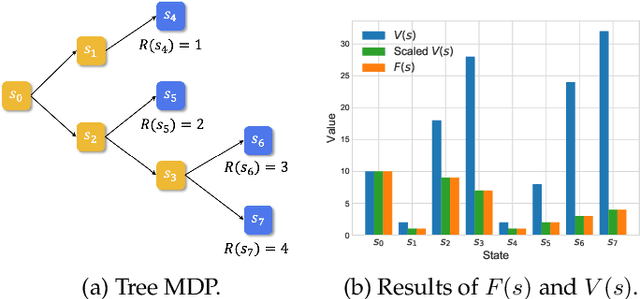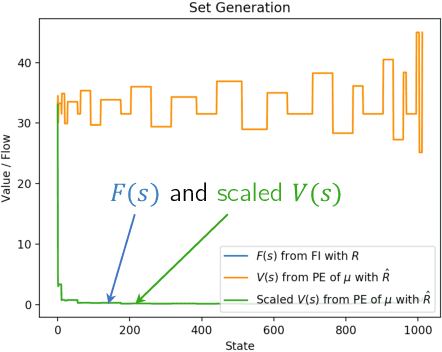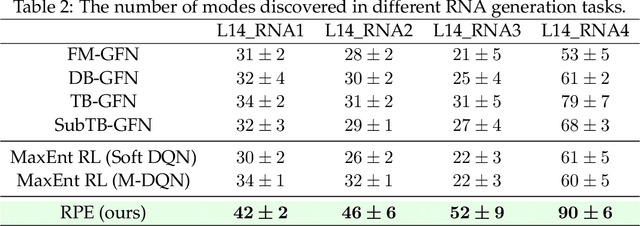Rectifying Reinforcement Learning for Reward Matching
Paper and Code
Jun 04, 2024



The Generative Flow Network (GFlowNet) is a probabilistic framework in which an agent learns a stochastic policy and flow functions to sample objects with probability proportional to an unnormalized reward function. GFlowNets share a strong resemblance to reinforcement learning (RL), that typically aims to maximize reward, due to their sequential decision-making processes. Recent works have studied connections between GFlowNets and maximum entropy (MaxEnt) RL, which modifies the standard objective of RL agents by learning an entropy-regularized objective. However, a critical theoretical gap persists: despite the apparent similarities in their sequential decision-making nature, a direct link between GFlowNets and standard RL has yet to be discovered, while bridging this gap could further unlock the potential of both fields. In this paper, we establish a new connection between GFlowNets and policy evaluation for a uniform policy. Surprisingly, we find that the resulting value function for the uniform policy has a close relationship to the flows in GFlowNets. Leveraging these insights, we further propose a novel rectified policy evaluation (RPE) algorithm, which achieves the same reward-matching effect as GFlowNets, offering a new perspective. We compare RPE, MaxEnt RL, and GFlowNets in a number of benchmarks, and show that RPE achieves competitive results compared to previous approaches. This work sheds light on the previously unexplored connection between (non-MaxEnt) RL and GFlowNets, potentially opening new avenues for future research in both fields.
 Add to Chrome
Add to Chrome Add to Firefox
Add to Firefox Add to Edge
Add to Edge